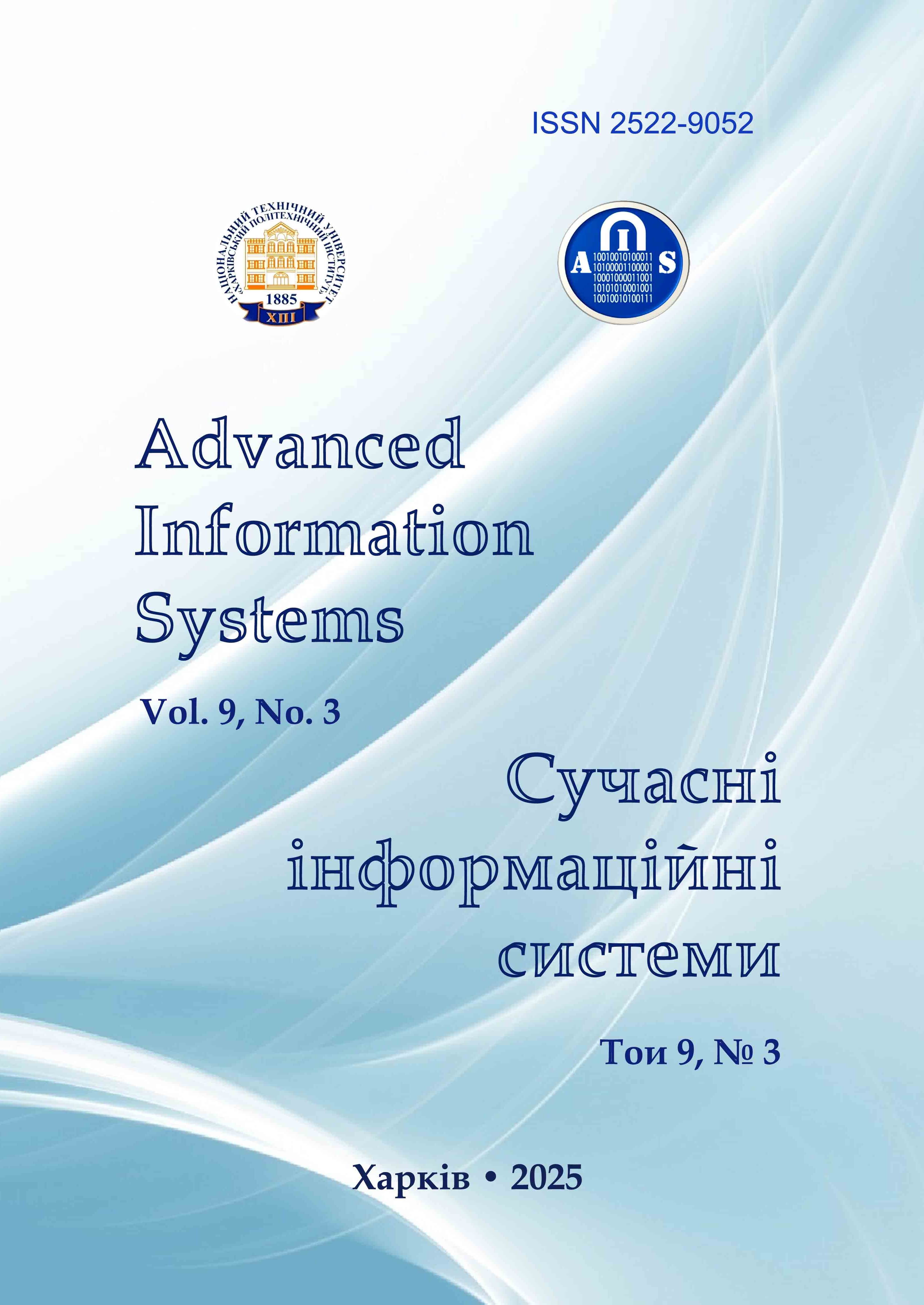MULTIPLE RECURSIVE DIVISION EXPLANATIONS FOR IMAGE CLASSIFICATION PROBLEMS
Main Article Content
Abstract
The aim of the research. In this paper, the approach to search for multiple explanations of the CNN image classification case is proposed. Research results. The core of the method is recursive division (RD), that performs the perturbation of the input image with hiding different rectangular parts. The explanation is represented as a complementary images pair (CIP): two images that allow us to visualize the parts of the image which are important enough to change the class of the input image when hidden and at the same time are important enough to preserve the initial classification result when visible. The parameters of RD method are discussed to choose the criteria to stop the processing when few explanations are found or the further processing requires too much time and/or memory resources. Two approaches to merge multiple CIP back to single explanation using SLIC segmentation were proposed. They allowed us to reduce the useful image explanation area and sometimes find more visually attractive CIP compared to previous RD implementations. Such merging is not strictly required just multiple CIP explanations are good enough for analysis of the CNN. Conclusion. The implementation of the proposed approach for cats and dogs breed classification problem was compared with other popular methods like RISE and Grad-CAM, the benefits and drawbacks are discussed. The performance analysis confirmed the advantage of the proposed methods as they are comparable or faster with known and allow us to find multiple explanation images.
Article Details
References
Carvalho, D.V., Pereira, E.M., and Cardoso, J.S. (2019), “Machine learning interpretability: A survey on methods and metrics”, Electronics, vol. 8(8), 832, doi: https://doi.org/10.3390/electronics8080832
Gilpin, L., Bau, D., Yuan, B., Bajwa, A., Specter, M., and Kagal, L. (2018), “Explaining explanations: An overview of interpretability of machine learning”, 2018 IEEE 5th International Conference on Data Science and Advanced Analytics (DSAA), pp. 80–89, doi: https://doi.org/10.1109/DSAA.2018.00018
Ibrahim, R., and Shafiq, M. (2023), “Explainable convolutional neural networks: A taxonomy, review, and future directions”, ACM Computing Surveys, vol. 55, no. 10, pp. 1–37, doi: https://doi.org/10.1145/3563691
Linardatos, P., Papastefanopoulos, V., and Kotsiantis, S. (2021), “Explainable AI: A review of machine learning interpretability methods”, Entropy, vol. 23, no. 1, doi: https://doi.org/10.3390/e23010018
Molnar C. (2025), Interpretable Machine Learning, 3rd rd., available at: https://christophm.github.io/interpretable-ml-book
Song, Y. (2020), Towards multi-scale visual explainability for convolutional neural networks, available at: http://www.diva-portal.org/smash/get/diva2:1468770/FULLTEXT01.pdf
Zhang, Q., Wang, X., Wu, Y., Zhou, H., and Zhu, S. (2021), “Interpretable CNNs for object classification”, IEEE Transactions on Pattern Analysis & Machine Intelligence, vol. 43, no. 10, pp. 3416–3431, doi: https://doi.org/10.1109/TPAMI.2020.2982882
Zhang, Q., Wu, Y., and Zhu, S. (2018), “Interpretable convolutional neural networks”, 2018 IEEE/CVF Conference on Computer Vision and Pattern Recognition, pp. 8827– 8836, doi: https://doi.org/10.1109/CVPR.2018.00920
Zhou, J., Gandomi, A.H., Chen, F., and Holzinger, A. (2021), “Evaluating the quality of machine learning explanations: A survey on methods and metrics”, Electronics, vol. 10, no. 5, doi: https://doi.org/10.3390/electronics10050593
Chalyi, S., Leshchynskyi, V., and Leshchynska, I. (2019), “Designing explanations in the recommender systems based on the principle of a black box”, Advanced Information Systems, vol. 3, no. 2, pp. 47–51, doi: https://doi.org/10.20998/2522-9052.2019.2.08
Chalyi, S., and Leshchynskyi, V. (2023), “Probabilistic counterfactual causal model for a single input variable in explainability task”, Advanced Information Systems, vol. 7, no. 3, pp. 54–59, doi: https://doi.org/10.20998/2522-9052.2023.3.08
Lundberg, S., and Lee, S. (2017), “A unified approach to interpreting model predictions”, The 31st International Conference on Neural Information Processing Systems (NIPS'17), pp. 4768–4777, doi: http://doi.org/10.48550/arXiv.1705.07874
Ribeiro, M., Singh, S., and Guestrin, C. (2016), “Why should I trust you? Explaining the predictions of any classifier”, Proceedings of the 22nd ACM SIGKDD International Conference on Knowledge Discovery and Data Mining ACM 2016, pp. 1135–1144, doi: https://doi.org/10.1145/2939672.2939778
(2025), Randomized Image Sampling for Explanations (RISE), available at: https://github.com/eclique/RISE/blob/master/Easy_start.ipynb
Petsiuk, V., Das, A., and Saenko, K. (2018), “RISE: Randomized input sampling for explanation of black-box models”, ArXiv, doi: https://doi.org/10.48550/arXiv.1806.07421
Selvaraju, R., Cogswell, M., Das, A., Vedantam, R., Parikh, D., and Batra, D. (2017), “Grad-CAM: Visual explanations from deep networks via gradient-based localization”, 2017 IEEE International Conference on Computer Vision (ICCV), pp. 618–626, doi: https://doi.org/10.1109/ICCV.2017.74
Jiang, M., Khorram, S., and Fuxin, L. (2024), “Comparing the Decision-Making Mechanisms by Transformers and CNNs via Explanation Methods”, 2024 IEEE/CVF Conference on Computer Vision and Pattern Recognition (CVPR), pp. 9546–9555, doi: https://doi.org/10.1109/CVPR52733.2024.00912
Shitole, V., Fuxin, L., Kahng, M., Tadepalli, P., and Fern, A. (2021), “One explanation is not enough: structured attention graphs for image classification”, Proceedings of the 35th International Conference on Neural Information Processing Systems (NIPS '21), vol. 34, pp. 11352–11363, available at: https://dl.acm.org/doi/10.5555/3540261.3541129
Gorokhovatskyi, O., and Peredrii, O. (2020), “Multiclass image classification explanation with the complement perturbation images”, Data Stream Mining & Processing (DSMP 2020), Communications in Computer and Information Science, vol. 1158, pp. 275–287, doi: https://doi.org/10.1007/978-3-030-61656-4_18
Gorokhovatskyi, O., and Peredrii, O. (2021), “Recursive division of image for explanation of shallow CNN models”, Pattern Recognition. ICPR International Workshops and Challenges Proceedings, Part III, pp. 274–286, doi: https://doi.org/10.1007/978-3-030-68796-0_20
Gorokhovatskyi, O., and Peredrii, O. (2024), “Recursive Division Explainability as a Factor of CNN Quality”, Lecture Notes on Data Engineering and Communications Technologies, vol. 219, pp. 308–325, doi: https://doi.org/10.1007/978-3-031-70959-3_16
Gorokhovatskyi, V., Chmutov, Y., Tvoroshenko, I., and Kobylin, O. (2025), “Reducing Computational costs ny compressing the structural description in image classification methods”, Advanced Information Systems, vol. 9, no. 1, pp. 5–12, doi: https://doi.org/10.20998/2522-9052.2025.1.01
Gorokhovatskyi, O., Peredrii, O., and Gorokhovatskyi, V. (2020), “Interpretability of Neural Network Binary Classification with Part Analysis”, The Third IEEE International Conference on DataStream Mining & Processing, pp. 136–141, doi: https://doi.org/10.1109/DSMP47368.2020.9204310
(2025), Grad-CAM - training tutorial, available at:
https://colab.research.google.com/drive/1rxmXus_nrGEhxlQK_By38AjwDxwmLn9S?usp=sharing
Parkhi, O., Vedaldi, A., Zisserman, A. and Jawahar, C. V. (2025), The Oxford-IIIT Pet Dataset, available at: https://www.robots.ox.ac.uk/~vgg/data/pets/
Parkhi, O., Vedaldi, A., Zisserman, A., and Jawahar, C. (2012), “Cats and dogs”, 2012 IEEE Conference on computer vision and pattern recognition (CVPR), pp. 3498–3505, doi: https://doi.org/10.1109/CVPR.2012.6248092
Sandler, M., Howard, A., Zhu, M., Zhmoginov, A., and Chen, L. (2018), “MobileNetV2: Inverted residuals and linear bottlenecks”, 2018 IEEE/CVF Conference on Computer Vision and Pattern Recognition (CVPR), pp. 4510–4520, doi: https://doi.org/10.1109/CVPR.2018.00474
